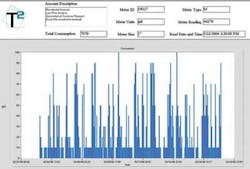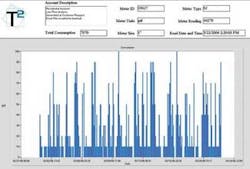City of North Las Vegas is “AMR Agile”
The utilities department of North Las Vegas faces some unique challenges due to the breakneck growth rate of the city’s population. Over the past 6 years, the city has grown by 10%-20% per annum and added up to 7500 new water services per year. As new subdivisions were completed from one month to the next, the meter reading staff was becoming over taxed with adding new routes and expanding existing routes.
To relieve the pressure, city management decided to implement a city wide AMR system. The utilities department attempted to implement an AMR program in the 1990s with dismal results and a failed project so utility personnel were not too excited to accept the low bid alternative from the AMR vendors. The utilities department began testing several different AMR systems in the fall of 2002 to determine which available technology would best meet the city’s needs.
After thoroughly testing the different AMR products within their system for 18 months, the city decided the most favorable in March 2004 was the Sensus MXU/VXU system drive-by AMR system. The Sensus system offered a two way, high powered transponder with reliable reads and good transmission distance. The Sensus mapping software is GPS guided and it increased the reading efficiency to 3,000 - 5,000 meter reads per day per man. After one year, the system was up and running with over 5,000 transponders installed by city personnel.
The project management team consists of the Utilities Director, Mr. David Bereskin P.E., Manager of Business Services, Mr. Michael Wilson and the Utilities Project Supervisor, Mr. Scott Hill. In early 2005 the team decided to continue looking at developing technology in AMR with an eye toward possibly running a second system if it offered the utility added customer service benefits and / or increased reading efficiency.
In June 2005, the city requested a demonstration of a “state of the art” AMR product from Transparent Technologies (T2). T2’s system offered potentially better reading efficiency because of its high frequency one-way reading acquisition system. In contrast to the two-way, high power radio operation of the Sensus system, the T2 transponder bursts a high power signal every few seconds while the receiver in the car simply listens for T2 signals. The less complicated exchange between transponder and vehicle unit allows the T2 system to increase drive speeds from around 15 MPH to the speed limit in the residential subdivisions.
The biggest allure of the T2 system is the additional features it offers the City. The T2 M1B transponder includes additional hardware / software that allow it to monitor the consumption patterns of the water services and notify the utility of any problems. The company’s tag line is, “It is like having a customer service representative in every pit.” The product’s onboard datalogger saves the most current 16,000 hours (more than a year) of hourly consumption that is easily accessible at any time by the utility field personnel.
“The datalogging tool has been instrumental in resolving some of our disputed bills,” says Mr. Hill. “If the service already has a T2 we can generally resolve the issue on the spot. If it doesn’t, we offer the homeowner the option of having one installed to monitor their use over the next billing cycle.”
Water conservation is always an issue in North Las Vegas. The area is always in some degree of drought. The SNWA (Southern Nevada Water Authority) restricts watering during most of the year and the City appreciates the T2s capability to monitor each service’s irrigation patterns and transmit an alarm when the rules are being violated.
When a conservation violation occurs, the transponders transmit a message to the reading vehicle. Instead of the icon disappearing from the reading screen, a fountain icon is displayed letting the operator know of the violation. Then, the operator can download the datalogger (see screen capture) for a bird’s eye view of service’s consumption pattern.
The T2 M1B also detects and transmits backflow events, leaks, and zero consumption. All of these alarms can be uploaded to the billing system to print notifications on the bill.
As electronics get faster and smaller, running two drive-by systems concurrently becomes less and less of an issue. The T2 R1 vehicle receiver is slightly larger than a hotdog bun. The Sensus VXU is considerably larger but even so the two systems fit easily in a light duty pickup truck.
Before the city committed to adding the T2 system, the question was asked, “How can the driver (meter reader) watch two computer screens and safely operate the vehicle?”
Mr. Bereskin insisted for obvious safety reasons he didn’t want the driver staring at even one computer screen while operating a city vehicle. He instructed staff to run a test to verify that mixed subdivisions could be read with both laptops closed with very few reads missed. This was indeed the case. Subsequently, many subdivisions are now mixed with both T2 M1B radios and Sensus MXU radios. The reading vehicle operates both reading systems simultaneously in an automated fashion.
Mr. Wilson will not even rule out another AMR system. “As advances are made in AMR performance and features, the city will continue to evaluate the benefit of employing other products. With these products lasting 15-20 years, utilities cannot allow themselves to become slave to one particular technology or product. It is always a good idea to keep the situation competitive.”

